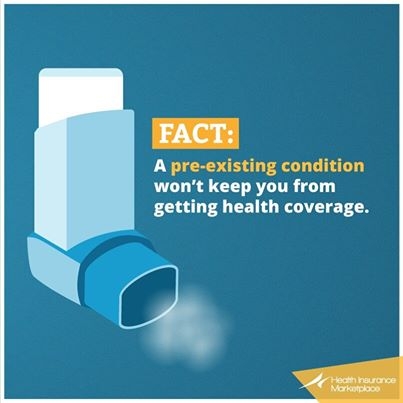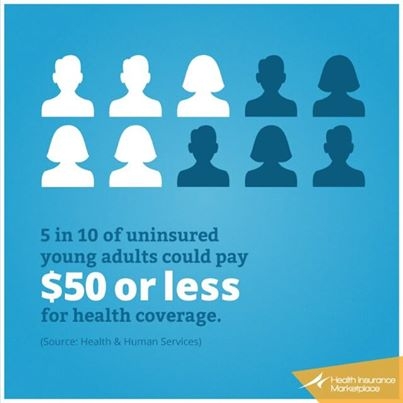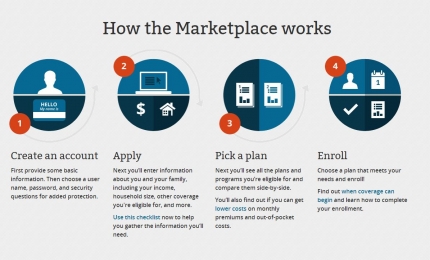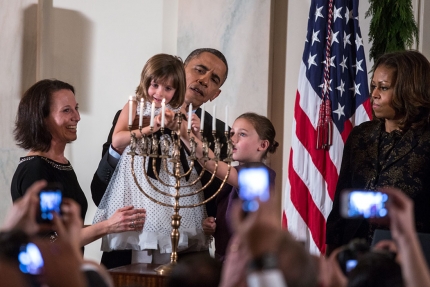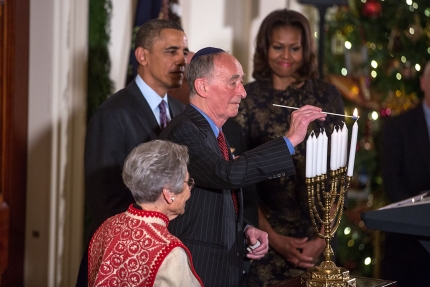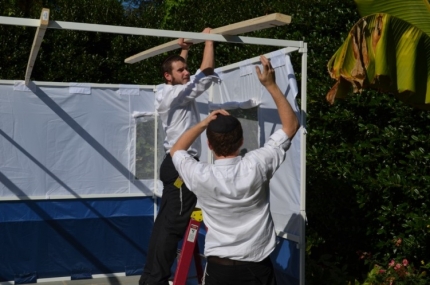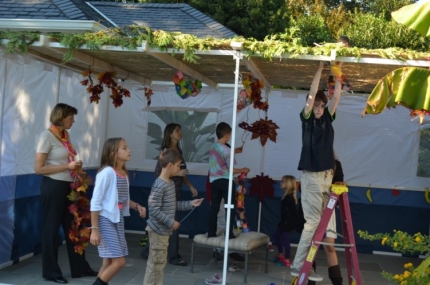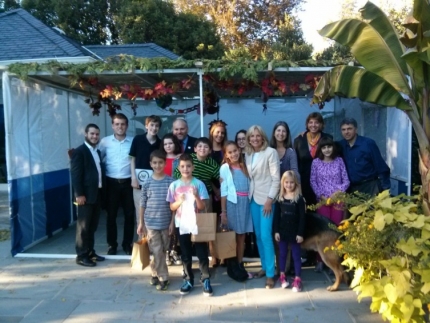Blog Posts Related to the American Jewish Community
Mobilizing for a Healthier Future: Participate in the Jewish Community Day of Action for Health Care Coverage on February 18th
Posted by on February 18, 2014 at 8:48 AM ESTThe number 18 is a powerful number in Jewish heritage. It represents “chai,” meaning life. Today, taking care of ourselves and others so that we all live love and healthy lives is more important than ever. The Jewish community has always placed a high importance on mental, spiritual, and physical health. Whether it’s your mother’s matzoball soup when you’re sick or helping someone from your temple get the care they need, maintaining good health for a long life is a core Jewish value.
In order to ensure that every person, regardless of gender or age or preexisting condition, has access to our nation’s healthcare system, we are getting the word out on how Americans and their families can access health affordable, quality health insurance between now and March 31 in the federal and state health insurance Marketplaces. Since October 1, more than 3 million people have enrolled in a private insurance program through the Marketplaces, and over 6.3 million have enrolled in Medicaid or CHIP through state agencies or state-based marketplaces. It’s impossible to know when illness could strike, and it’s crucial that every American have some form of health insurance. That’s why we’re making a big push to educate about enrolling in the healthcare exchanges for everyone we know.
On February 18th, in partnership with the National Council of Jewish Women (NCJW), we’re calling on congregations, Jewish advocacy and social service organizations, and anyone in the Jewish community who is interest to participate in the Jewish Community Day of Action for Health Care Coverage. Here are 18 ways that you or the organizations you belong to or work with can participate in the Day of Action, which is all about ensuring a healthy future for Americans and their families, including in the American Jewish community. We hope you will join us!
18 Ways to Participate in February 18th Day of Action
- Post on Facebook to remind your friends of key dates and facts about enrolling in the health insurance marketplace. Visit www.facebook.com/healthcare.gov for ideas.
- Write an article for your organization newsletter or member bulletin.
- Put up posters around your community that provides information about how, why, and by when to get covered in the marketplace.
- Talk to a young person in your life about the benefits of health insurance. Tell them how 5 in 10 young adults could pay $50 or less per month for coverage, less than most cell phone bills!
- Post on Twitter using the hashtag, #GetCovered and let people know they can access the marketplace (1) online at www.healthcare.gov; (2) by phone at 1-800-318-2596, (3) in person at www.localhelp.healthcare.gov, (4) or by mail at http://1.usa.gov/1bcLknf.
- Host a Shabbat dinner or house party, and talk about why getting covered is important to you.
- Send an email to a local list serve as a friendly reminder that the enrollment deadline is coming up on March 31, about the financial assistance available to many who enroll, and why you care that people on the list have the information they need to access quality, affordable coverage.
- Publish an ad in your local newspaper about key benefits of coverage in the marketplace.
- Plan a text study that explores Jewish perspectives on health care access, caring for our bodies, and caring for our neighbors.
- Reach out to media outlets at local community colleges and universities.
- Drop off palm cards about health coverage at your local synagogue, child care center, gym, or other local business.
- Sign up for NCJW’s distance learning conference call, “When Chicken Soup Isn’t Enough: Helping Our Communities Get Covered,” to learn more about the benefits of marketplace coverage. Go to NCJW’s website for more information.
- Prepare a “Mitzvah Day” for your congregation before March 31. Work with another organization already involved in outreach to uninsured residents in your community to help raise awareness about how coverage works and how to access an affordable, quality plan in the marketplace.
- Write an op-ed encouraging reads to sign up for health insurance. ! Especially if you are a member of the clergy or an organizational leader, your voice inspires others to learn more about health coverage.
- Partner with local college student clubs to set up an information table on campus at venues such as the student center, cafeteria, or near the bookstore.
- Post a widget or badge on your organization or business website.
- Host a viewing party for an educational webinar about the marketplace provided by the US Department of Health and Human Services (HHS) Faith-based and Neighborhood Partnership Center. Webinars are available in English and Spanish. Learn more and see the upcoming schedule at http://www.hhs.gov/partnerships/resources/aca_101-invite.html.
Learn more about Health CareHanukkah at the White House 2013/5774
Posted by on December 6, 2013 at 5:39 PM ESTOn Thursday, December 5, the President and Mrs. Obama welcomed members of the American Jewish community to the White House to celebrate Hanukkah. They hosted two receptions in the Grand Foyer of the White House. Guests included leaders from a broad range of national and local Jewish organizations; Supreme Court Justices; Administration officials; Members of Congress; leaders from the religious community, representing an array of denominations and organizations; athletes; actors; academics; musicians; authors; journalists; and other community stakeholders. The U.S. Marine Band, America’s oldest continuously active professional music organization, known as “the President’s own,” performed in the East Room.
At both receptions, the food preparation occurred under the strict rabbinical supervision of Rabbi Levi Shemtov, Lubavitch Center of Washington (Chabad), in cooperation with the Rabbinical Council of Greater Washington. Watch this remarkable still-camera video that captures the koshering of the White House kitchen.
Afternoon Hanukkah Reception
At the afternoon reception, arriving guests were welcomed into the White House to the sounds of Zemer Chai (“living song”), a choir of 30 singers from the Washington, DC metropolitan area dedicated to sharing the rich and diverse musical heritage of the Jewish people. Founded in 1976, the choir sings the full range of the Jewish repertoire.
The President and Mrs. Obama joined guests for the ceremonial candlelighting program as the eighth day of Hanukkah was drawing to a close. The President made remarks, recognizing the creators of “Thanksgivukkah” and the 10-year-old inventor of the “Menurkey,” created because of the intersection this year of Hanukkah and Thanksgiving. He then invited a military chaplain, Rabbi Amanda Lurer to recite an appropriate blessing to remind the gathering and the world of the meaning of this holiday. Rabbi Lurer serves in the U.S. Navy and recently returned from a nine-month deployment in the Eastern Mediterranean.
Following the blessing, Lainey and Kylie Schmitter, ages 8 and 4, respectively, lit the candles with a little help from their mom, Drew Schmitter. A military family, Lainey’s and Kylie’s Dad, Jacob Schmitter, is a graduate of the U.S. Naval Academy currently on his fifth deployment to a forward operating base in Afghanistan.
The Menorah
The Schmitters lit Manfred Anson’s Statue of Liberty Menorah, which pays tribute to the promise of America for Jews who have emigrated here to find new opportunity and, in many cases, rebuild their lives. In 1986, to celebrate the centennial of the Statue of Liberty, Anson created the Statue of Liberty Menorah, taking the design of a century-old Polish seven-branched menorah and adapting it for Hanukkah. He used a Statue of Liberty statuette for each branch of the menorah, transforming Lady Liberty’s torch of freedom into the candleholder for each night of Hanukkah and for the service candle. Also, he inscribed important events in Jewish history – from the Exodus from Egypt to the Holocaust and the establishment of the State of Israel –onto the base of each statuette and crowned the menorah with the American bald eagle. The Statue of Liberty Menorah being used this year at the White House was cast from the original mold in 2011 at the request of Dr. Aaron Feingold, who donated it to the National Museum of American Jewish History.
Evening Hanukkah Reception
At the evening Hanukkah Reception, guests were treated to the sounds of Pizmon, the coed Jewish a cappella group of Columbia University, Barnard College, and The Jewish Theological Seminary of America. Pizmon (Hebrew for the chorus of a song), performing Jewish music as a source of inspiration and community outreach, was founded in 1987 and is the first collegiate Jewish a cappella group.
The President and Mrs. Obama joined guests in the Grand Foyer for remarks and a candlelighting program. On a serious note, President Obama noted the passing, a few hours earlier, of former South African President Nelson Mandela. He spoke of Hanukkah as “a story of miracles, of a light that burned for eight days when it should have only lasted for one and a people who surmounted overwhelming odds to reclaim their historic homeland, so they could live their lives in peace and practice their religion in peace.”
The President then invited Rabbi Joshua Sherwin, a military chaplain who serves as the rabbi at the U.S. Naval Academy in Annapolis, to offer an appropriate blessing to remind the gathering and the world of the meaning of this holiday. The candles on a special menorah brought from the Jewish Museum in Prague were lit by two Holocaust survivors from the former Czechoslovakia, Margit Meissner and Martin Weiss, from Bethesda, Maryland. Both are volunteers at the U.S. Holocaust Memorial Museum in Washington.
The Menorah
The nineteenth-century brass menorah used at the evening reception – and the fate of the couple who owned it – illuminates the turbulent history of the Jewish community in Bohemia and Moravia during the first half of the twentieth century and the ultimate triumph of good over evil. In 1922, Abraham Isaac and Hayyah Ettinger, a husband and wife who lived in the Czech town of Hrušov, donated the 19th century brass menorah to the local prayer hall. They are named in the Hebrew inscription engraved on the menorah’s base:
The menorah was used in the prayer hall until the Nazis burned it down on the night of June 11, 1939, and demolished the rest of the building during the following winter. On November 23, 1939, after the annexation of the Czechoslovak border area (the Sudetenland), the Nazis expelled the Ettingers and their three children and deported them to Poland. The Ettingers were murdered by the Nazis in an unknown place in 1943.
Today, the menorah has been used to celebrate Hanukkah at the U.S. Ambassador’s Residence in Prague, a mansion that was built by a Jewish family in the 1920s and seized by the Nazis and used as a headquarters for their leaders during the German occupation.
Learn more aboutFrom the Archives: Hanukkah at the White House
Posted by on December 5, 2013 at 10:45 AM ESTEd. note: Today at 4:10 ET, tune in to whitehouse.gov/live to see President Obama deliver remarks at a White House Hanukkah Reception
Among the gifts from heads of state that are in the holdings of the Harry S. Truman Presidential Library and Museum is a menorah presented to President Truman by Israel’s first Prime Minister, David Ben-Gurion. The menorah dates back to at least 1767, when it was donated to a synagogue in Buergel, Germany.
The menorah was used in the synagogue until 1913, when it was found broken in pieces. A man by the name of Siegfried Guggenheim asked for the broken pieces and provided a replacement. The Guggenheim family restored the old menorah for their personal use, and brought it to the United States when they immigrated in the 1930s. Eventually, the menorah was acquired by the Jewish Museum in New York.
When Prime Minister Ben-Gurion visited the United States in 1951, he searched for a suitable gift to give to Harry S. Truman in light of the President’s recognition and support of the State of Israel. The Jewish Museum suggested the menorah, and Prime Minister Ben-Gurion presented it to Truman on his birthday, May 8, 1951.
In 1979, Jimmy Carter participated in lighting a Hanukkah menorah on the Ellipse, just south of the White House. Each President since then has commemorated Hanukkah at the White House. The ceremonies have ranged from small presentations in the Oval Office to large parties with the First Family, but they have all shared the common element of a Hanukkah menorah.
Learn more aboutThe First Vice Presidential Sukkah
Posted by on September 25, 2013 at 4:55 PM ESTLast night, the Vice President and Dr. Jill Biden hosted their fall Jewish Community reception at the Vice President’s residence. To mark the occasion, which took place during the seven-day festival of Sukkot, the Vice President and Dr. Biden welcomed their guests with the first-ever Vice Presidential sukkah.
Sukkot is an especially joyous holiday, because it falls right after the days of prayer and introspection that characterize the High Holidays, and it is known as the “season of our rejoicing.” This annual fall harvest festival also commemorates the 40-year journey of the Jewish people from Egypt through the desert to the Land of Israel.
To recall the journey through the wilderness to the Land of Israel, Jews build and decorate a temporary hut at their homes or synagogues, and the Torah commands that they dwell in them for seven days. Jews most commonly observe this command by eating all of their meals in the sukkah. Additionally, in keeping with the joyous and inclusive nature of the holiday, Jews extend hospitality towards others by inviting guests to dine with them in the sukkah.
Before the reception, sukkah builders from American Friends of Lubavitch (Chabad) came to the Vice President’s official residence to build the sukkah….
After the sukkah was built, a group of Jewish children with disabilities from local area schools, joined by their parents, came to decorate the sukkah. . .
After the sukkah was up, Dr. Biden (and Champ) made a surprise visit to the sukkah….
And the sukkah, which is a symbol of hospitality and inclusion, was ready for the guests. Read more about the Vice Presidential sukkah here.
Matt Nosanchuk is an Associate Director in the White House Office of Public Engagement.
President Obama’s Rosh Hashanah Visit to the Great Synagogue of Stockholm
Posted by on September 4, 2013 at 1:54 PM ESTThis year, as Jews in America and around the world begin gathering with the family, friends and synagogue communities to celebrate Rosh Hashanah, the Jewish New Year, they are joined by President Obama, who made an historic visit today to the Great Synagogue of Stockholm on the first leg of his trip to Sweden and the G20 Summit on the eve of Rosh Hashanah. The Synagogue, established in 1870, stands at the heart of the Swedish Jewish community, and the President’s visit sends an important multidimensional message about tolerance, whether it takes the form of combating anti-Semitism, promoting LGBT rights, or accepting regional and ethnic diversity.
President Obama was joined at the synagogue by the congregation’s Rabbi and members of Stockholm’s Jewish community. For Rosh Hashanah, the synagogue was decorated in white, a symbol of renewal and purity for the holiday. In addition, President Obama was joined by members of the family of Raoul Wallenberg, the heroic Swedish diplomat, who, in partnership with the U.S. War Refugee Board, traveled to Budapest and saved tens of thousands of Hungarian Jews by shielding them from deportation behind the blue and yellow of the Swedish flag.
President Obama honored Wallenberg’s memory in his remarks at the Synagogue:
“I cannot think of a better tribute to Raoul Wallenberg than for each of us -- as individuals and as nations -- to reaffirm our determination to live the values that defined his life, and to make the same choice in our time. And so today we say that we will make a habit of empathy. We will stand against anti-Semitism and hatred, in all its forms. We will choose to recognize the beauty and dignity and worth of every person and every child. And we will choose to instill in the hearts of our own children the love and tolerance and compassion that we seek.”
During his visit, Swedish Prime Minister Reinfeldt showed the President several artifacts related to Wallenberg’s life and work. The President also visited the Holocaust Memorial erected on the wall outside the Synagogue in 1998, bearing the names of the 8,500 relatives of Jews living in Sweden who were murdered by the Nazis. In keeping with tradition of honoring the deceased, President Obama placed a stone on the Memorial and paused for a moment of reflection.
Matt Nosanchuk is an Associate Director in the White House Office of Public Engagement
Learn more aboutRosh Hashanah Greetings From the White House
Posted by on September 4, 2013 at 7:30 AM ESTShanah Tovah from the White House! At sundown on Wednesday evening, the Jewish community here in the United States and all over the world will begin celebrating Rosh Hashanah, the Jewish New Year.
Over the course of the High Holidays, we reflect on the past year and recommit ourselves to our core values. This year, the American Jewish community had the opportunity to do this as Jews and as Americans. That is because Rosh Hashanah this year falls just one week after our entire nation had the occasion to reflect on our values during the historic 50th anniversary of the March on the Washington.
In his 2013 video message for the High Holy Days, President Obama says:
“Fifty years ago last week, Rabbi Joachim Prinz stood with Dr. King on the steps of the Lincoln Memorial. Representing the thousands of Jews there that day, he told the marchers, “When God created man, he created him as everybody's neighbor. Neighbor is not a geographic term. It is a moral concept.”
“For millions of Jews, this moral concept is at the heart of Rosh Hashanah and Yom Kippur. As the high holidays begin, it’s a chance not just to celebrate with friends and family, but to ask some of life’s most piercing questions. Am I treating strangers with kindness? Am I living not just for myself, but for others? Am I doing my part to repair the world? Where we fall short, the New Year is a new opportunity to get things right.
“And where we still have work to do, the New Year is a chance to reaffirm our commitments. At home, we must continue building an economy that gives all people willing to work hard a fair shot at a middle-class life. Beyond our borders, we must stand for the security of our allies, even as we take new steps in the pursuit of peace. I was proud to visit Israel earlier this year to renew the unbreakable bond between our two countries, and to talk directly with young Israelis about the future we share.
“Just like the generations that came before us, we live in challenging times. But I know that if we work together we can make this moment one of hope for all our neighbors – in America, in Israel, and around the world. In that spirit, Michelle and I wish you and your family a sweet, happy, healthy, and peaceful New Year.”
Matt Nosanchuk is an Associate Director in the White House Office of Public Engagement
Learn more aboutMiddle East Peace Negotiators Come To Washington
Posted by on August 1, 2013 at 7:49 AM ESTAt the invitation of Secretary of State John Kerry, Israeli and Palestinian negotiators traveled to Washington this week to formally resume direct final status negotiations. Justice Minister Tzipi Livni and Yitzhak Molcho represented the Israelis, and Chief Negotiator Saeb Erekat and Mohammad Shtayyeh represented the Palestinians.
As the negotiations got underway on Monday, President Obama offered his support, noting:
“The most difficult work of these negotiations is ahead, and I am hopeful that both the Israelis and Palestinians will approach these talks in good faith and with sustained focus and determination. The United States stands ready to support them throughout these negotiations, with the goal of achieving two states, living side by side in peace and security.”
On Tuesday morning, President Obama and Vice President Biden met with the negotiators at the White House. The President conveyed his appreciation to both sides for the leadership and courage they have shown in coming to the table, and to directly express his personal support for final status negotiations towards the goal of achieving two states living side by side in peace and security.
This resumption of talks began in Washington on Monday night with an Iftar dinner hosted for the negotiators by Secretary Kerry at the U.S. Department of State, and also attended by the newly appointed U.S. Special Envoy for Israeli-Palestinian Negotiations, Ambassador Martin Indyk.
Negotiations continued on Tuesday and concluded with a press conference at which Secretary Kerry emphasized that the goal of the negotiations is to reach a final status agreement over the course of the next nine months. He also announced that the parties will meet again within the next two weeks either in Israel or the Palestinian Territories.
“I think everyone involved here believes that we cannot pass along to another generation the responsibility of ending a conflict that is in our power to resolve in our time,” said Secretary Kerry in his remarks on Tuesday. “So while I understand the skepticism, I don’t share it and I don’t think we have time for it. . . . A viable two-state solution is the only way this conflict can end, and there is not much time to achieve it, and there is no other alternative.”
In his remarks, Kerry reiterated the U.S. commitment to Israel’s security:
“Our commitment to Israel’s security is why President Obama’s Administration has done more than any before it to strengthen our unshakeable bond and why General John Allen is on the ground working to ensure Israel’s security needs will be met. . . .”
He also underscored the benefits of peace, stating: “We can also envision a day when Israelis actually can truly live in peace – not just the absence of conflict, but a full and a lasting peace with Arab and Muslim nations, an end once and for all to the pernicious attacks on Israel’s legitimacy. . . . And we cannot forget that the security of Israel will also benefit Palestinians next door.”
In her remarks, Justice Minister Livni thanked President Obama for his dedication to the peace process, recalling his historic trip to Israel in March, which served to jump-start the process that led to this week’s meetings:
“I also want to thank President Obama for his personal commitment to peace and to Israel’s security. The powerful impression left by the President’s last visit to Israel still remains in the hearts of the Israeli people,” said Minister Livni.
In his remarks, Chief Negotiator Erekat expressed his appreciation to the President and Secretary Kerry:
“I would like to extend our deepest appreciation to President Barack Obama and to you, Secretary Kerry, for your relentless efforts and unwavering commitment to achieve a just, comprehensive, lasting peace between Palestinians and Israelis.”
Read and watch more of Tuesday’s remarks here.
Matt Nosanchuk is an Associate Director of the White House Office of Public Engagement.
Learn more about , Fiscal Responsibility, Foreign PolicyJewish American Heritage Month
Posted by on May 30, 2013 at 7:48 AM ESTLast week, the White House celebrated the eighth annual Jewish American Heritage Month. As President Obama declared in his proclamation honoring this month, “More than 350 years have passed since Jewish refugees first made landfall on American shores. We take this month to celebrate the progress that followed, and the bright future that lies ahead.”
Over 150 students, organization representatives, and leaders from the American Jewish community gathered in the White House to enjoy a staging of the “Gefilte Fish Chronicles: The Musical”, which was adapted to a musical production following its successful 2007 television premiere. “The Gefilte Fish Chronicles” speaks to the Jewish American experience and to the rich traditions and stories that American Jews have kept alive across the generations.
The audience also had the opportunity to hear from Senior Advisor to the President, Valerie Jarrett, who spoke about the President’s commitment to the American Jewish community and from Congresswoman Debbie Wasserman Schultz, who was the driving force behind JAHM’s inception in 2006. We thank them for their participation in this unique event.
Zachary Kelly is Special Assistant to the Deputy Chief of Staff and works with the Office of Public Engagement on Jewish outreach.
- &lsaquo previous
- 1
- 2
- 3
- 4
- 5
- 6
- 7
- 8
- 9
- …
- next &rsaquo
